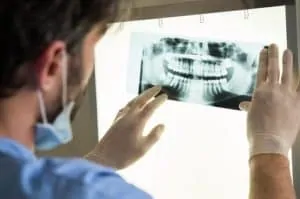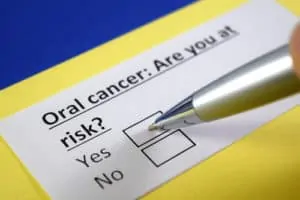Archives

What We’re Looking for
While we can tell a lot about your oral health through our thorough exams and cleanings, there are just some things the human eye can’t see. For these diseases or problems, we turn to x-rays of your teeth and jaw. Taking pictures of the inner workings of your teeth can help us diagnose:
- Decay that’s not yet surfaced
- Bone loss associated with gum disease
- Impacted wisdom teeth
- Damaged bone cause by an infection
- Abscesses or other root problems
Taking x-rays allows your dentist in Sparks to see any issues that may not yet have signs or symptoms, making them easier to treat before they lead to pain or more complicated treatments.
The Different Types of Dental X-Rays
There are several different types of x-rays that your dental team may use to examine various parts of your oral anatomy. Each type of x-ray can help show different things. Some of the most common x-rays include:
- Bitewing X-rays. Bitewing x-rays are the ones that can show cavities or areas of decay that may not yet be visible, or are lurking in hard-to-see areas such as in between teeth or fillings. These x-rays may also show bone density health and any deterioration caused by gum disease.
- Periapical X-rays. Just like bitewing x-rays, periapical x-rays are pretty common. You probably have had them taken and may not have even known it. These x-rays show images of the entire tooth, including the roots. The images allow your dentist to look at each tooth individually to make sure each one is structurally sound and bone levels are healthy and strong. Periapical x-rays can also help catch cysts and abscesses.
- Panoramic X-rays. Panoramic x-rays are used for the most complete view of your entire mouth. The images don’t only show all your teeth, but also your sinuses, jaw joints, and jaw bones. These photos can help determine if wisdom teeth are impacted and can even help diagnose a tumor.
Dental x-rays are an important part of your preventive dental care and should be taken at least once a year, but sometimes we may recommend getting them taken at every bi-annual visit. The advancements in technology, along with the careful measures we take in our Sparks dental office make dental x-rays incredibly safe and have low radiation emissions. If you’re concerned about dental x-rays, we welcome you to talk to any one of our team members.

Know The Risks
It’s important to note that anyone can develop oral cancer whether they have or engage in factors that increase their risk or not. Some of the risks are unavoidable, but many can be controlled through making smart lifestyle choices. Some factors that increase the risk of oral cancer include:
- Tobacco Use: Smoking cigarettes, cigars, or using smokeless tobacco greatly increases your risk of oral cancer. Statistics show that 80% of oral cancer diagnoses are in tobacco users.
- Drinking Alcohol: Consuming alcohol regularly can also put you at greater risk. Nearly 70% of those diagnosed with oral cancer are heavy drinkers.
- Drinking & Smoking: Since both tobacco use and drinking large amounts of alcohol increases the likelihood of getting oral cancer, if you do both, your chance for oral cancer can be as high as 100%.
- Gender: Men are two times more likely to develop oral cancer than women. While this risk factor can’t be changed, men can reduce their risk by not drinking or smoking.
- Age: Our chances of getting oral cancer increases as we age. The average age of diagnosis is 62, and the majority of oral cancer patients are at least 55.
- UV Rays: Skin cancer isn’t the only thing that can happen from too much unprotected sun exposure. Oral cancer is also higher in those who spend a lot of time in the sun without wearing sunscreen.
Recognize The Symptoms
Being able to identify the signs and symptoms of oral cancer early increases the chance of survival. Oral cancer treatment is often successful in the earlier stages, so the sooner you see your dentist in Sparks if you suspect anything, the better. The most common signs include:
- Chronic bad breath
- Sores that won’t heal
- A lump on the cheek
- Difficulty swallowing
- Changes in your voice
During your regular dental cleanings and exams, your hygienist and dentist will monitor your mouth for any abnormalities and can use high-tech equipment that can show what the human eye can’t see. This is just another reason maintaining your bi-annual dental appointments is so important to your overall health.
If it’s been longer than six months since your last visit, call our dental office in Sparks to schedule an appointment today. You never know, one visit could save your life.
